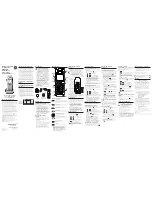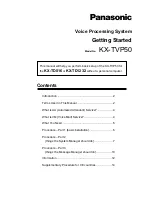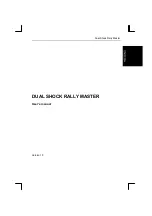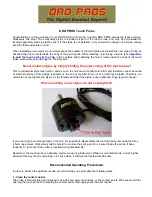
www.enersys.com
EnerSys EMEA
Brussels, Belgium
Tel: +32 (0)2 247 94 47
EnerSys Asia
Guangdong, China
Tel: +86-755-2689 3639
EnerSys Limited
Rake Lane,
Clifton Junction,
Swinton, Manchester
M27 8LR, UK
Tel: +44 (0)161 794 4611
Fax: +44 (0)161 727 3809
EnerSys
P.O. Box 14145
Reading, PA 19612-4145
USA
Tel: +1-610-208-1991
+1-800-538-3627
Fax: +1-610-372-8613
Contact:
© 2006 EnerSys. All rights reserved.
Trademarks and logos are the property of EnerSys and its affiliates unless otherwise noted. VARTA is a registered trademark of Varta Automotive Systems GmbH, used under license.
Publication No: EN-V
AR
T
A-NB-IS-001 - September 2006- Subject to revisions without prior notice. E.&O.E.
5.2 Electrolyte check and topping up
Check the electrolyte level and never let the level fall below the lower
level mark “MIN”. Use only distilled or deionized water to top-up the
cells in accordance with IEC 60993. Experience will tell the time
interval between topping-up. Refilling with electrolyte is only
permissible if spilled electrolyte has to be replaced. If during refilling
or topping up, electrolyte has been splashed onto the cell cover or
between the cell cases, clean this off and then dry the area.
NOTE: Once the battery has been filled with the correct electrolyte
either at the factory or during the battery commissioning, there is no
need to check the electrolyte density periodically. Interpretation of
density measurements is difficult and could lead to
misunderstandings.
5.3 Replacing of electrolyte
In most stationary applications the electrolyte will retain its
effectiveness for the total lifetime of the battery. However, under
special battery operating conditions, if the electrolyte is found to be
carbonated, the battery performance can be restored by replacing the
electrolyte. Only use genuine electrolyte!
It is recommended to change the electrolyte when reaching a
carbonate content of 75 g/litre. It is possible to test the electrolyte in
the manufacturer’s laboratory. For this a minimum quantity of
0.2 litres of electrolyte in a clean glass or polyethylene container
should be sent in, paying strict attention to the valid dangerous goods
regulations. The sample of electrolyte should be taken half an hour
after charging has ended and from several cells of the battery. Do not
take the samples immediately after topping up. The electrolyte sample
and the cells should be closed immediately after the electrolyte has
been taken.
CAUTION - caustic potash solution is corrosive!
5.4 Electrolyte temperature
The maximum recommended electrolyte temperature is 50°C.
For optimal product life and performance, the recommended average
temperature is
≤
35°C. Continuous operation with electrolyte
temperature > 45°C can impact product life and performance.
Electrolyte temperature readings are to be made on one of the cells in
the middle of the battery
Low ambient or electrolyte temperatures down to -25 °C do not have
any detrimental effect on the battery. They just cause a temporary
reduction in capacity.
6. Additional warning notes
NiCd batteries must not be installed or stored in the same room as
lead acid batteries. In addition to this the charging gases from lead
acid batteries must be kept away from Ni-Cd batteries by suitable
precautions such as ventilation or hermetic isolation of the rooms.
Tools for lead acid batteries must not be used for NiCd batteries.
Layout details: inter unit connection
A) nut connection
B) screw connection
1) cell container
2) cell connector
3) spring washer
4) nut
5) connector cover
1) cell container
2) cell connector
3) spring washer
4) screw
5) connector cover






















